The Pottery Of John Fritz: An American Journeyman Migrant Potter
By Justin W. Thomas - July 07, 2023
While recently scouring the fields for any good pottery or other treasures at the Spring edition of the antique shows in Brimfield, Mass., I came across an intriguing 19th century salt-glazed stoneware figure of a reclining lion that measures over 12 inches in length. The dealer told me that it was recently discovered in an old estate in New Hampshire. My initial reaction when picking the lion up was that it reminded me of some pottery examples attributed to the Thomas Haig Pottery and John Fritz in Philadelphia, however, a little different. But, I suspected that it was at least an American-made object, possibly from Pennsylvania or Ohio, although I would not rule out New York as an origin either. Red earthenware and stoneware examples made at the Haig Pottery are displayed today at the Philadelphia Museum of Art and the Wadsworth Atheneum Museum of Art in Hartford, Conn. Furthermore, I also found a red earthenware lion that is most likely from the Haig Pottery this past winter near Portland, Maine. The career of John Fritz as a potter in Philadelphia and elsewhere in America is less-known today. The Pottery of John Fritz According to the Amana Colonies Visitors Bureau in Iowa, The Amana Colonies are a group of settlements of German Pietists, compromising seven villages. Calling themselves the Ebenezer Society of the Community of True Inspiration, die Gemeinde der wahren Inspiration, they first settled in New York State near Buffalo in what is now the town of West Seneca. However, in order to live out their beliefs in more isolated surroundings they moved west to the rich soil of east-central Iowa (near present-day Iowa City) in 1855. They lived a communal life until the mid-1930s. A striking feature of the Amana Colonies is that for 80 years they maintained an almost completely self-sufficient local economy, importing very little from the wider, industrializing U.S. economy. The Amanians were able to achieve this independence and lifestyle by adhering to the specialized handcrafts and farming occupations which they had brought with them from Germany. Additionally, it is published in Mark C. Wisemans book, A History of the Des Moines Potteries, with Additional Information on Boonesboro, Carlisle, Hartford, and Palmyra, The potters (at the Ebenezer Society in upstate New York near Buffalo) made dinnerware and cookware for the community kitchens as well as containers for daily tasks. Pottery was produced in the shop until 1855 when the society moved to its present location in Amana, Iowa. No pottery shop opened at the Amana location because all men were needed to help build the new community. New dinner ware or containers that were needed in Amana would be purchased from the outside. Both bone china and stoneware pottery was available through the general stores in each village. Elizabeth Reitman Zuber, granddaughter of John Fritz, recalls: John Fritz was my grandfather who married a daughter of Martin Shoup. He was Swiss; he originally was a silk weaver and then learned pottery as an apprentice with a master. He came over to the United States on a ship that took 45 days to cross the water. He lived in New York, where he learned of the Ebenezer Society and decided to join. In Ebenezer, he had a pottery shop. Children would come into the shop and get scraps of clay and pottery. A young lady by the name of Dina Shoup was told by Opa (Grandpa), You like nice dishes, Ill make you a pitcher. He made pitchers, tea pots, crocks, milk pots and flower pots, as well as other items. He came to Amana in 1855 and was a builder of houses for a number of years. He was also associated with clay in the making of clay bricks. At the age of 60, Chrisian Metz (the community leader) again asked Opa to be a pottery maker. He was living in Middle Amana. He had a pottery wheel, I think in the washhouse, where he made pottery. The local clay was not to good for pottery as it seemed to warp a great deal. However, it worked well for the making of flower pots. He made many of them. The clay came out of the backyard where he lived. I think he had an oven at this home that was heated by wood. He may have fired some of the pottery in the clay brick kilns. Interestingly, there is also a John Fritz documented as a potter in Philadelphia in the late 19th century, whereas this may be the same Fritz. For instance, one of Fritzs business cards recently surfaced that indicates he operated a Fancy Terra Cotta Works, No. 836 St. John Street, Philadelphia. Contradictory to this address, though, some rustic stoneware mugs that were made by John Fritz or at a business he owned in the late 1800s reveal a different address, inscribed on the base, John Fritz / 5th R. Somerset St. / Phil. However, there are also some similarities found in the rustic stoneware mugs that were signed by Fritz and others that were made at Jacob C. Cassells Fair-Hill Terra Cotta Works in Philadelphia about 1880, which was located at 2341 N. Seventh St. For example, my nephew, Jason, and I found a complete set that consisted of four mugs and a pitcher a few years back in southeastern Pennsylvania. But it is unclear if they were made by Fritz or at Cassells company, but they do closely resemble each others production. This type of mug and pitcher set was also produced by Richard C. Remmey in Philadelphia, the Wingender Pottery in Haddonfield, N.J., and possibly other American potters about the same period. Sources Fair-Hill Terra Cotta Works 1880 Catalog. The American Florist, Volume IV, 1889. Wiseman, Mark C. A History of the Des Moines Potteries, with Additional Information on Boonesboro, Carlisle, Hartford, and Palmyra. Nashville, TN: Published by author, 2014.



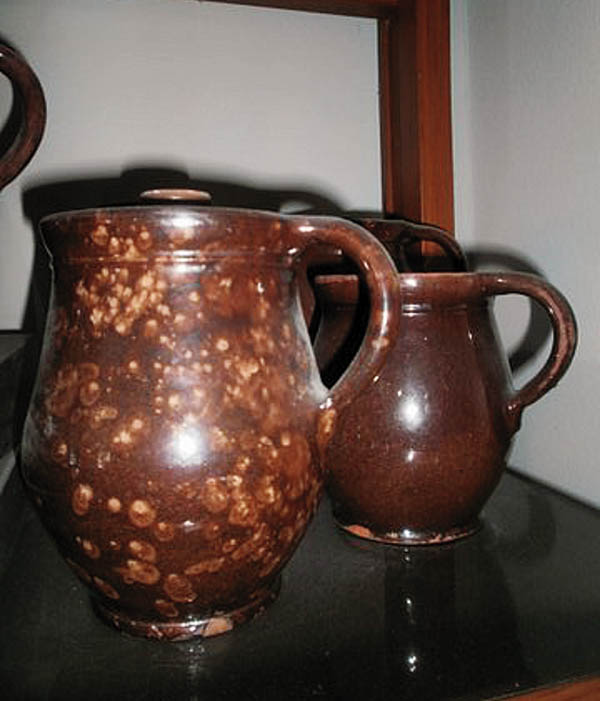
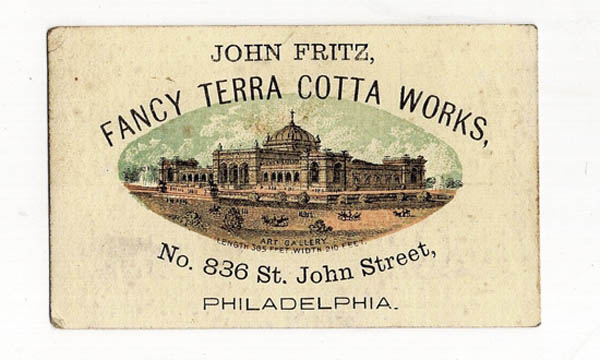

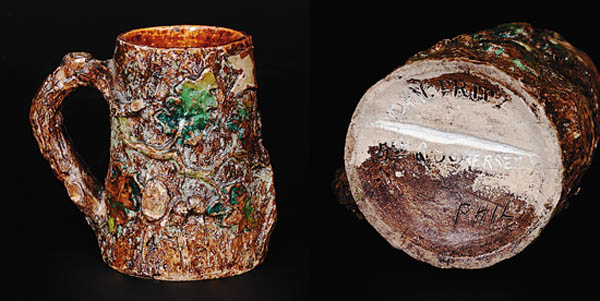

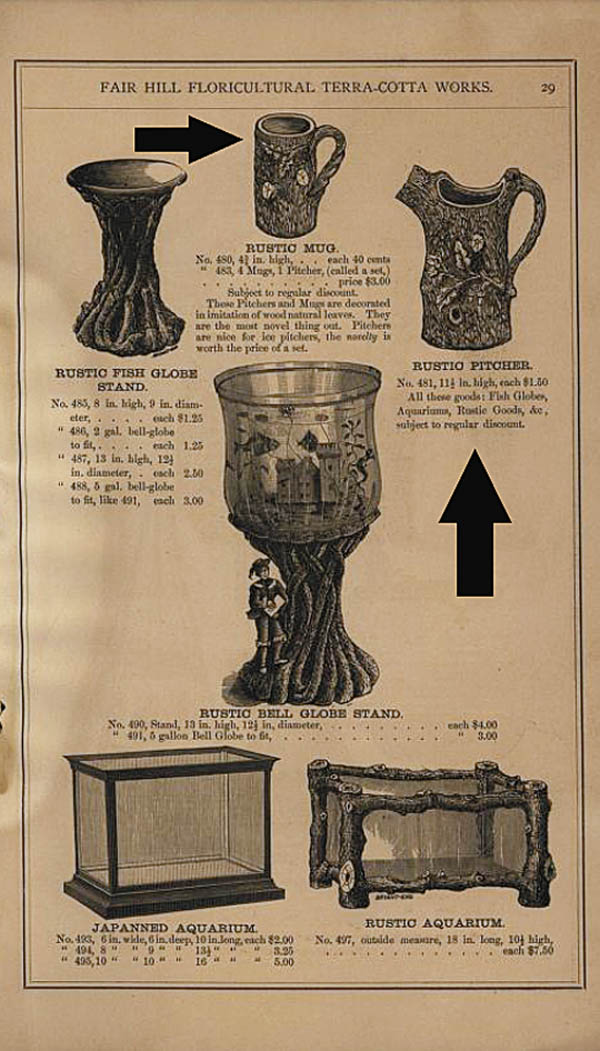
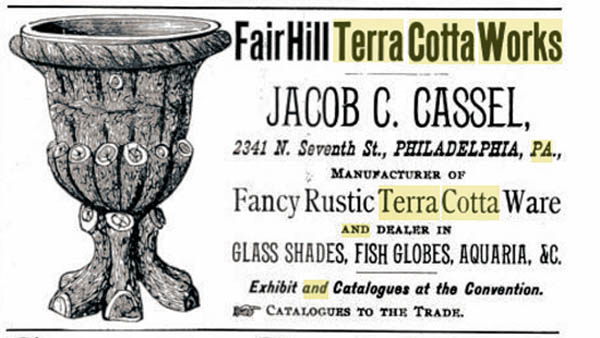
SHARE
PRINT